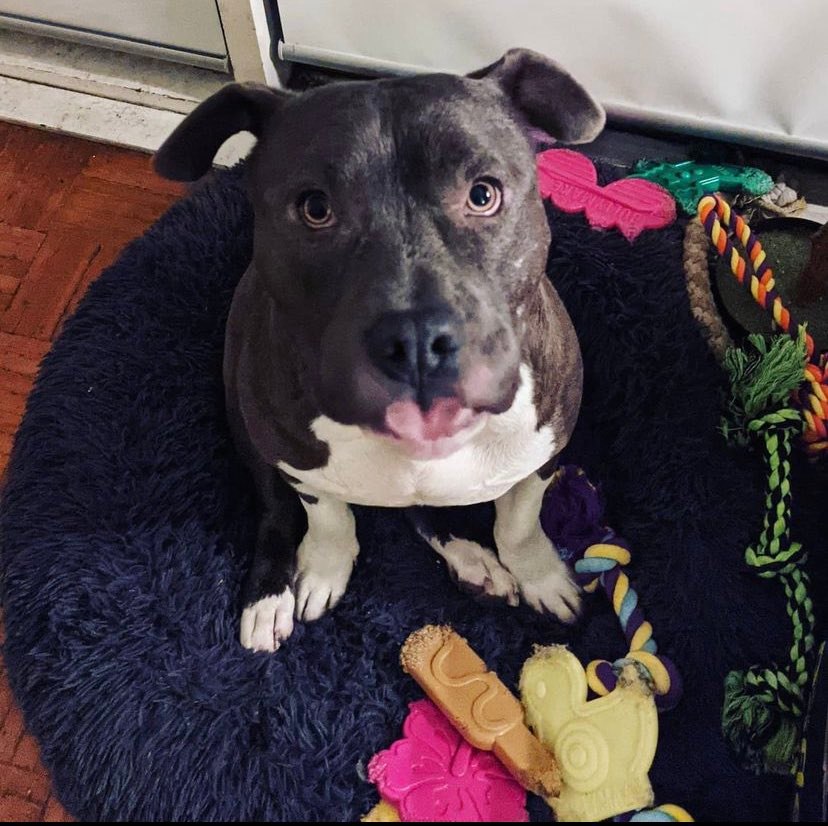The case to end blanket pet bans for renters in NSW
Riley Brooke • 23/05/2022
NSW tenancy law still allows for blanket ‘no pets’ clauses, so landlords can continue to refuse requests to get a pet for any reason, or no reason at all. In late 2020 NSW saw changes to strata regulation that had implications for owner-occupiers, and a small proportion of renters, in strata properties. However, as we outline here, these changes do not remove the barriers from the vast majority of renting households wishing to get a pet.
In this blog we look at why this needs to change and the direction other states and territories are moving in to make their tenancy laws more pet friendly. We then consider the kinds of changes we'd like to see here in NSW to make sure renters are able to share their rented homes with their pets.

Why does this need to change?
- Australians love our pets: Pet ownership in Australia is among the highest in the world. Almost two thirds of Australian households have a pet today, and 90% have had a pet at some time. This includes a significant proportion of renting households. Australians spend $12 billion a year on pets, which is unsurprising given 88% of households with pets describe their pets as family.
- Animal welfare: Refusal to allow pets can severely restrict a person’s ability to find appropriate and affordable housing. This can lead to much-wanted pets being given up to shelters or abandoned, or in some cases, to renters becoming homeless with their animals. It can also mean animals being kept on the sly in premises that aren't suitable for them, that can lead to greater property issues.
- Physical and mental health and wellbeing: Pets can help child development and encourage exercise, and can provide structure in the lives of elderly people post-retirement or after the loss of a partner. Research shows that pets can also be a great tool in managing long-term mental health conditions, and can even be prescribed as part of mental health treatment plans.
- Domestic and family violence: A lack of pet-friendly rentals can be life-threatening for people experiencing domestic violence. People with animals often delay leaving violent circumstances because they are unable to find a new home where they can take their animals. Where animal abuse has occurred as part of the domestic violence, as many as 68% of people report delaying leaving because of concerns for the animal. Where a person is forced to rehome or surrender their animal so that they can leave the violence, this can compound trauma and hinder healing.
- Autonomy: The often-arbitrary denial of permission for renters to have pets is indicative of a broader problem in the NSW renting system: the denial of autonomy to renters. Renters are often denied the opportunity to make basic decisions about our homes around things that owner-occupiers take for granted: whether or not to adopt an animal, and what type; as well as making basic changes to our homes like hanging pictures on the walls or gardening. Renters need autonomy and dignity in our homes.
Rental crisis and pets
Across much of regional NSW, vacancy rates are worryingly low, and we hear every day of renters who have experienced eviction and are entirely unable to secure a new rental home. For renters in this situation who have pets, difficulty securing a new home is compounded by the large proportion of properties advertised as ‘no pets’.
Kaye is a 70-year-old grandmother living on the NSW South Coast with her two cats, Greywacke and Toffee. She recieved a ‘no grounds’ termination notice from her landlord in late-2021. Kaye’s community had been in housing crisis for several years because of bushfires, floods, and the COVID-19 pandemic. Kaye has been applying for rental properties for months, but has been unable to find a new home, let alone one that is pet-friendly.
Pets and renting in other states and territories
There has been some movement on the issue of pets and renting in Victoria, Queensland and the ACT in recent years. These jurisdictions have adopted a new model for the regulation of pets in rentals (although the changes to Queensland law won't take effect until October 2022). While there are slight differences between the three, the general model is:
- Blanket ‘no pets’ clauses are prohibited.
- Renters wishing to get a pet must request consent from the landlord, but if the landlord wishes to deny consent, they must do so for specific reasons and within a certain time period of receiving the request, otherwise the consent is presumed given.
- The Tribunal may decide it is reasonable for the landlord to refuse consent for a range of reasons, including, for example, that the landlord would suffer hardship from approving the pet (e.g. they have a severe allergy to that type of animal), if the animal is a risk to public safety, if the home has inappropriate features, space or fencing for that animal, and if there are other laws that would allow the landlord to refuse consent (e.g. local council laws).
While these frameworks are an improvement on the current NSW laws, they are imperfect.
Firstly, these reforms do not necessarily address potential discrimination as the renter will be required to disclose they have a pet and request consent when applying for a new property. Landlords and agents may reject all applications that include requests for consent to have a pet. It can be extremely difficult to prove that discrimination is the reason for any individual application to be rejected. It is not necessarily clear that such discrimination would be unlawful.
And while ‘no grounds’ evictions remain legal (as they currently remain to some degree everywhere in Australia), there are few protections for renters who request consent to have a pet and are met with a ‘no grounds’ termination notice. We already see ‘no grounds’ termination notices issued in response to other reasonable, lawful requests from the renter (e.g. requesting repairs and maintenance, or refusing unlawful access). This would very likely occur in relation to pet requests, too.
More broadly, we take issue with the decision-making surrounding pets and renting being so firmly held with landlords. Consideration of whether or not a renter should have a pet should be primarily grounded in animal welfare (e.g. the appropriateness of the dwelling for that animal) ahead of any other factors. Renters - just like their home owning neighbours - should consider whether to bring a pet into their rented home based on whether their housing is able to provide a safe and appropriate environment for their pet.
How could pets and renting be better regulated?
We have been thinking about what a good model of regulation around pets and renting might look like for some time now. Below we outline some of the key elements in an approach to regulation that prioritises animal welfare and better balances the interests of the renter and landlord.
- Autonomy for renters: A renter should be able to decide for themselves whether or not to adopt an animal, without first having to seek permission from their landlord. When making this decision the renter should consider the animal's welfare and whether the rental property they are living in is appropriate to meet the animal's needs. Considering whether your home will meet the welfare needs of the animal you want to adopt is something that anyone about to adopt a pet should be considering - whether they rent or own.
- Animal welfare guidelines to ensure good welfare outcome for companion animals: Guidelines around responsible pet ownership and appropriate animal welfare standards should be established, and could be given force through existing companion animal regulation. The guidelines would provide clear guidance on how to determine whether a property is appropriate for a pet, based on the welfare needs of the specific pet that might include factors such as exercise needs, size, outdoor space, proximity to neighbours, and the security of the property. These guidelines would be developed in consultation with animal welfare groups and the broader community, and could appropriately be applied to all owners of pets (regardless of tenure). A renter would then be able to consider whether their rental home or the rental property they are considering applying for would meet the guidelines (i.e. would meet appropriate animal welfare standards) and whether it can appropriately house their pet.
- Prohibition against blanket 'no pets' terms & protection against discrimination at application: Tenancy laws should prohibit landlords or agents from asking about pet ownership at the application stage, and prohibit ‘no pets’ terms in residential tenancy agreements. Renters would still be required to disclose if they have a pet to their landlord once they have entered into an agreement, with the rules stipulating for example that renters must disclose within 14 days if a pet is at the property and what type.
- Disallowing pet at rental property only where animal welfare guidelines not met: If the landlord believes the animal is unsuitable for the property, they can apply to the Tribunal to disallow the pet. The Tribunal would be guided to consider the suitability of the pet with reference to the established animal welfare guidelines on companion animals (see above).
- Renters' remain liable for damage or breach caused by pet: Throughout the tenancy, landlords can exercise their normal rights to inspect the property, and inspections can include assessing how the pet is doing in the property. Renters would be responsible for their animal in their home just as they are anywhere else, and would be liable for damage, cleaning and noise issues. If the landlord has concerns about the pet’s welfare, behaviour, or impact on the property, they can access existing procedures such as reporting the animal to the local council, or taking the cost of damage out of the renter's bond.
A model like this would ensure that animal welfare considerations are at the core of decisions around pets in rental properties. It would provide clarity, structure and consistency across all rental properties, and address discrimination against people with companion animals. It would drive improved animal welfare outcomes as fewer animals would need to be surrendered to shelters, rehomed or abandoned, and ensure that pets in rental properties are in homes that meet their needs. By ensuring the property meets their needs, this will reduce the number of property maintenance or noise issues. It would also mean a greater number of renters are able to access the physical and mental health benefits of owning a pet, and would improve the safety of people experiencing domestic violence who have animals.

See also




